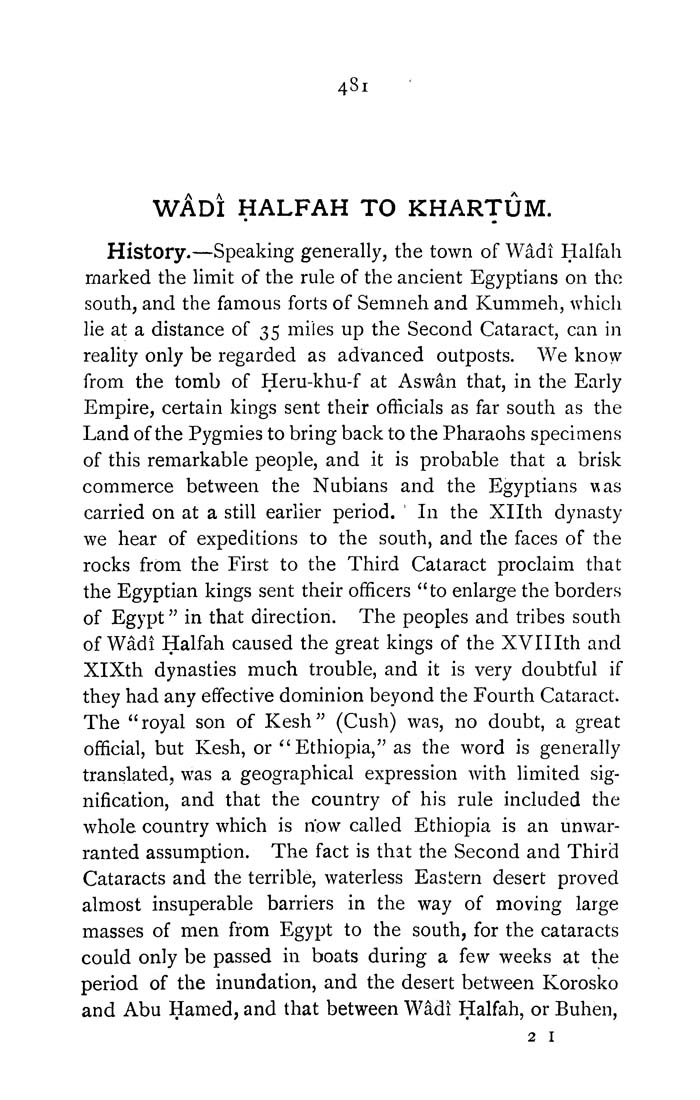48i
WADI HALFAH TO KHARTUM.
History.—Speaking generally, the town of Wadi Halfah
marked the limit of the rule of the ancient Egyptians on the
south, and the famous forts of Semneh and Kummeh, which
lie at a distance of 35 miles up the Second Cataract, can in
reality only be regarded as advanced outposts. We know
from the tomb of Heru-khu-f at Aswan that, in the Early
Empire, certain kings sent their officials as far south as the
Land ofthe Pygmies to bring back to the Pharaohs specimens
of this remarkable people, and it is probable that a brisk
commerce between the Nubians and the Egyptians \\as
carried on at a still earlier period. ' In the Xllth dynasty
we hear of expeditions to the south, and the faces of the
rocks from the First to the Third Cataract proclaim that
the Egyptian kings sent their officers "to enlarge the borders
of Egypt" in that direction. The peoples and tribes south
of Wadi Halfah caused the great kings of the XVIIIth and
XlXth dynasties much trouble, and it is very doubtful if
they had any effective dominion beyond the Fourth Cataract.
The "royal son of Kesh" (Cush) was, no doubt, a great
official, but Kesh, or ^'Ethiopia," as the word is generally
translated, was a geographical expression with limited sig¬
nification, and that the country of his rule included the
whole country which is now called Ethiopia is an unwar¬
ranted assumption. The fact is that the Second and Third
Cataracts and the terrible, waterless Eastern desert proved
almost insuperable barriers in the way of moving large
masses of men from Egypt to the south, for the cataracts
could only be passed in boats during a few weeks at the
period of the inundation, and the desert between Korosko
and Abu Hamed, and that between Wadi Halfah, or Buhen,
2 I
|








